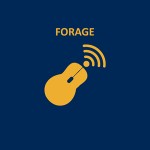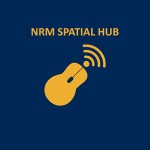Over 90 per cent of our region’s land is used for grazing, and carries approximately 1,400,000 head of cattle (Australian Bureau of Statistics, 2009). Most beef cattle enterprises are located on leasehold country and are based on grazing of rangelands rather than sown pastures. There are a variety of factors that threaten condition of pastures and soils (salinity, erosion, acidity, weeds and pests), many of which are associated with land uses and management practices that do not reflect the capability of land or constraints imposed by the region’s highly variable and challenging climate. Pasture decline is typically reflected in a loss of productive species, ingress of annual pasture grasses, reduced biodiversity and tree thickening. Research has shown that in a 20 year observation period (1993-2012) that uncleared woody vegetation is ‘thickening’ (increasing in stem density, stem size/basal area and/or canopy cover) on Queensland’s rural landholdings. It is debated that while the increased woody plant biomass increases carbon storage, it limits the growth of associated pasture and detrimental to rural enterprises (Burrows, 2015). An appropriate fire regime can manipulate pasture composition and modify grazing patterns to the advantage of agricultural production systems. Conversely an inappropriate fire regime can contribute to tree thickening and reduce grazing opportunities (Roth, et al., 2002).
In the Burdekin rangelands, over the past 30 years, there has been a reduction in the use of fire as a land management tool to maintain the quality of native pastures and to reduce fuel loads. This has been attributed to the weather cycles, where years of big wets, which result in large amounts of groundcover, are followed by drought years, creating large fuel loads for wildfires in dry years (Pisani & Shepherd, 2012).
There are a number of information hubs that support landholders to undertake appropriate fire regimes, including:
- the Queensland Government’s managing grazing lands with fire information packages; and
- Tropical Savannas Cooperative Research Centre’s satellite-based fire scar mapping. This mapping can be found on the North Australia Fire Information (NAFI) website. The live maps allow graziers to monitor fires on large properties, better protect infrastructure and fodder from wildfire, improve native pastures and woodland structures, and improve fire management planning (Felderhof & Jacklyn, 2011).
Within our region’s grazing area there are thirty-three land types, which are mostly characterised by phosphorus poor and highly-erodible soils. Two documents – the Sustainable Management of the Burdekin Grazing Lands and Land Condition Photo Standards for the Burdekin Dry Tropics Rangelands, identified these land types from collating previous regional and local soil mapping data, to better understand the interconnected nature of regional land types, their soils and pasture condition requirements. They highlight each land type’s preferred 3P grasses (productive, perennial and palatable), susceptibility to erosion, and safe utilisation rate (maximum rate of average annual use to maintain and encourage good land condition) (McIvor, 2012).
In recent years there have been significant improvements in grazing practices, and reductions in the rate of fine sediment loss from the Burdekin catchment, however, the overall health of soils in rangeland areas remain weak due to erosion and a significant loss of soil carbon as a legacy from past land practices (Hook, 2011). Assessment of our region for the Water Quality Improvement Plan (WQIP) (refer to Water section) has identified substantial areas of the Burdekin to be in very poor ‘D’ and poor ‘C’ land condition. ‘D’ condition land has significantly reduced groundcover and exposed soils, which erode more readily during high-intensity rainfall events that are a common feature in the Dry Tropics.
The proportion of our region with less than 50 per cent groundcover fluctuates substantially with rainfall; after multiple wet years only five per cent of our region has reduced ground cover and after several dry years this can increase to over 40 per cent of our region (Queensland Government, 2010).
The Upper Burdekin and Bowen sub-catchments have the highest rate of erosion derived from exposed subsoils, highlighting a significant loss of topsoil into the waterways as indicated by tracing data (Lewis, et al., 2015). Studies into gully erosion in the Upper Burdekin have also identified that long-term catchment runoff may be greater than 30 per cent higher from degraded catchments than from those in good condition (Wilkinson, et al., 2013) (Meat Livestock Australia, 2015).
Runoff and eroded sediment also carry nitrogen and phosphorus away from the landscape into receiving environments such as waterways, wetlands and marine ecosystems. Rainfall simulation programmes in the Burdekin region have identified that nitrogen and phosphorous loss from ‘D’ condition land was seven to ten times greater than from land in better condition (Cowie, et al., 2013). The programmes identified that where rehabilitation had occurred following aggressive soil disturbance, water infiltration increased and nitrogen and phosphorous losses were lower.
In addition, dryland salinity outbreaks occur in isolated parts of our region within the Cape River and Campaspe River catchments, and parts of the upper catchment of the Suttor River. Loss of trees and native perennial grasses due to clearing and inappropriate grazing management have increased groundwater recharge in affected landscapes, giving rise to the observed salinity (Roth, et al., 2002). The Salinity Management Handbook is a comprehensive document developed by the Queensland Government to better understand, investigate and manage where salinity does or might occur.
Overall, changes to pasture management to maintain good ground coverage does have notable effects on land condition and the water quality of runoff leaving the land (Bartley, et al., 2014). Regionally, a significant effort is needed to improve and maintain land condition to build resilience and avoid continued deterioration of regional land and soil health.
Preferred management practices vary depending on factors such as land type, presence of a seed bed, erosion extent and topography. In some cases direct mechanical work is needed for specific locations, which will incur a significant initial cost, however it can lead to rapid improvements in the land condition and overall long-term productivity (Moravek & Hall, 2015). In other instances, less intensive methods can lead to significant improvements that are potentially more cost-effective, such as ‘stick trap’ check dams, or the use of short-term, ultra high density grazing in smaller paddocks, which uses cattle’s hooves to grade eroded banks and spread manure to improve the seed bed (Wilkinson, et al., 2015) (NQ Dry Tropics, 2015c).
Grazing trials at Wambiana have proved that managing stock rates and wet season paddock spelling to maintain good groundcover can generate far more profit in the longer term than heavy stocking rates that also lead to land degradation (O’Reagain & Bushell, 2015). Generally, it is more profitable to manage stocking rates in line with the long-term carrying capacity of the grazing land type.



A range of collaborative tools and extension programmes have been developed to help graziers access information on land capability and provide farm management options to improve land condition and resilience through best management practice; including the documents mentioned previously and online tools such as FORAGE, Stocktake Plus and NRM Spatial Hub (Queensland Government, 2016) (Future Beef, 2016) (Rangelands Alliance, 2016). Improved property management practices include undertaking actions that go beyond industry standard requirements, such as:
- mapping land types;
- assessing land condition annually;
- calculating long-term carrying capacity based on area, land types, land condition, pasture utilisation rates and infrastructure;
- applying strategies to restore or improve long-term carrying capacity;
- pasture budgeting;
- strategically locating watering points;
- wet season spelling;
- fencing sensitive environmental areas; and
- managing sheet and gully erosion (Carey, 2008) (O’Reagain , et al., 2014), (McIvor, 2012) (Queensland Department of Agriculture, Fisheries and Forestry, 2013).
These practices increase pasture coverage, soil carbon content and water infiltration, improving overall soil health and land condition (Meat and Livestock Australia, State Department of Primary Industries and Fisheries, CSIRO)(Queensland Department of Agriculture, Fisheries and Forestry, 2013).
Related information
- 3P grasses
- Karfs, R., Holloway, C., Pritchard, K., and Resing, J. (2009). Land condition photo standards for the Burdekin Dry Tropics Rangelands: a guide for Practitioners.
- Landtypes
- McIvor, J. (2012). Sustainable management of the Burdekin grazing lands – A technical guide of options for stocking rate management, pasture spelling, infrastructure development and prescribed burning to optimise animal production, profitability, land condition and water.
- Qld Department of Environment and Resource Management. (2011). Salinity Management Handbook. 2nd Edition.
